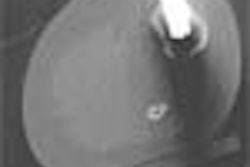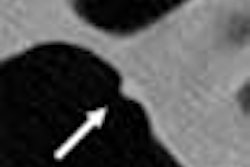SAN ANTONIO - Whole-body CT screening has no lack of detractors. Public health agencies, as well as U.S. medical and professional societies -- the American College of Radiology, the American College of Cardiology/American Heart Association, the American Association of Physicists in Medicine, and the Health Physics Society among them -- have recommended against CT screening of asymptomatic patients.
Meanwhile, the Food and Drug Administration has issued a less-than-crystal-clear verdict on the practice, an opinion that nevertheless leans toward the cautious side. According to the agency's Web site, the results of a normal CT screening exam could mean "you may really have nothing significant wrong with you, or you may have a hidden disease that fails to show up on a CT image or is missed or misinterpreted by the radiologist."
On the other hand, if the CT exam is interpreted as abnormal, "either the abnormal interpretation may be incorrect or you may have nothing significant wrong with you; or you may really have a life-threatening disease for which there may or may not be a cure."
But opposition to whole-body CT screening comes across as senseless given the promising results of CT screening for coronary artery disease, lung cancer, and colon cancer, said Dr. Michael Brant-Zawadzki during a presentation Monday at the Radiology Business Management Association (RBMA) summit.
"If you’re performing a whole-body CT scan, all three of these diseases can be screened with the results of that study," said Brant-Zawadzki. "In addition, you can also check for metastases that may have spread beyond the colon or lung."
Brant-Zawadzki is the medical director of radiology at Hoag Memorial Hospital in Newport Beach, CA, and a clinical professor at Stanford University Medical Center in Stanford, CA. He may also be the world's best-known proponent of CT screening.
In his presentation, Brant-Zawadzki argued that opposing whole-body CT screening on the premise that it "makes healthy people into sick people" is inconsistent with advocacy of other common screening protocols, such as mammography.
"If one applies the same logic to screening mammograms, it can be argued that mammography makes the breasts of all women over 40 potentially pre-cancerous," he said.
Brant-Zawadzki outlined some of the pros and cons of whole-body CT screening. A whole-body scan with 5-mm slices on a single breath-hold takes 26 seconds. Total patient transaction time, from the moment the patient enters the CT suite to the time of departure, is approximately 5-6 minutes, making for a speedy technical component of the procedure.
On the other hand, the professional component of interpretation of the images is not so quick. The radiologist must meet with and explain the results of the report to the consumer, in patient contact some radiologists might prefer to avoid, Brant-Zawadzki said.
"Obviously, this type of study is not for everyone. There are radiologists who entered this field of medicine because of the reduced patient contact," he observed.
Another plus to screening is early cancer detection, he said. Common medical wisdom holds that the earlier a cancer is detected, the better the chances for improved treatment results. Brant-Zawadzki observed that in the past 25 years, the five-year survival rate of 14% for lung cancer has not changed.
He said he believes that early detection through CT screening of an at-risk population may provide the best opportunity for increasing the lung cancer survival rate.
"By the time lung cancer is picked up on chest x-ray it’s had no effect on mortality," he said.
The detection of coronary artery disease (CAD) is another area that Brant-Zawadzki said he believes could benefit from the use of CT. Calcium scoring performed with the modality, as well as its sensitivity for detecting soft plaques, could vastly improve the mortality rate from heart disease, he believes.
Brant-Zawadzki cited the FDA’s own criteria for screening studies to support his advocacy of whole-body CT for lung cancer, colon cancer, and CAD screening. The conditions under which the FDA considers screening tests as "beneficial" include when they test for a particular disease or condition; catch disease early enough for a cure; or do not cause any significant harm.
Efficacy and sound science aside, one of the biggest hurdles that whole-body CT screening will have to overcome is profitability. Brant-Zawadzki acknowledged the whole-body CT venture that he was affiliated with was shut down because the financial model was no longer viable.
"The economics of the marketplace simply priced us out. Other firms sprang up in our area that started offering scans below $600, and we couldn’t break even at that price point," he said.
One conference attendee quipped: "Just because it's good medicine, that doesn’t mean you’re going to get paid for it."
By Jonathan S. BatchelorAuntMinnie.com staff writer
May 20, 2003
Related Reading
Legal issues shadow CT screening, February 27, 2003
Lung CAD applications starting to outread radiologists, February 13, 2003
U.S. cancer screening rates have increased in all categories over two decades, December 20, 2002
CT screening centers: Is there a right way to start one?, November 12, 2002
Following up incidental findings may do more harm than good, September 5, 2002
Copyright © 2003 AuntMinnie.com




















